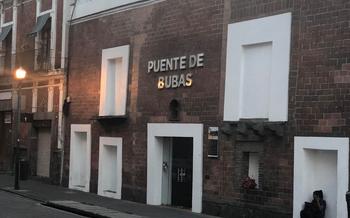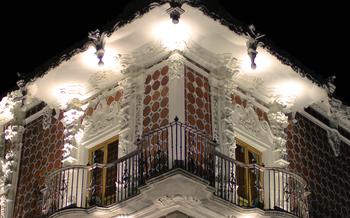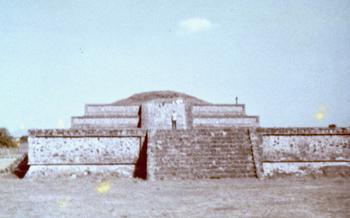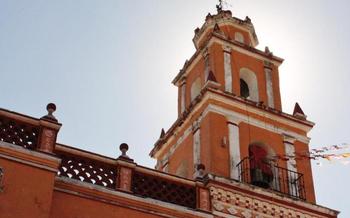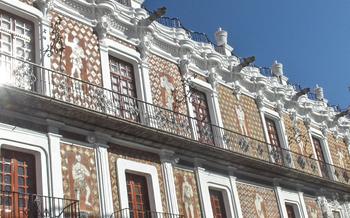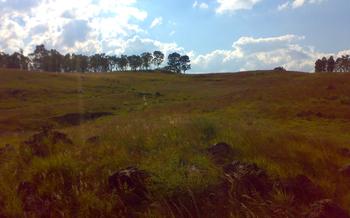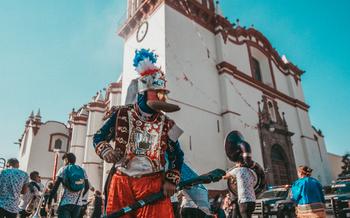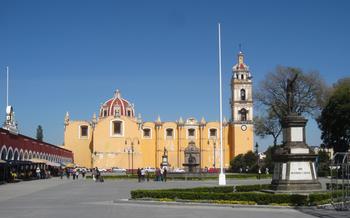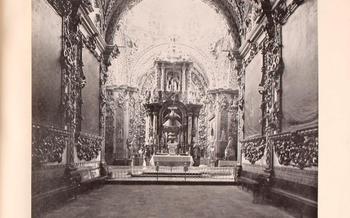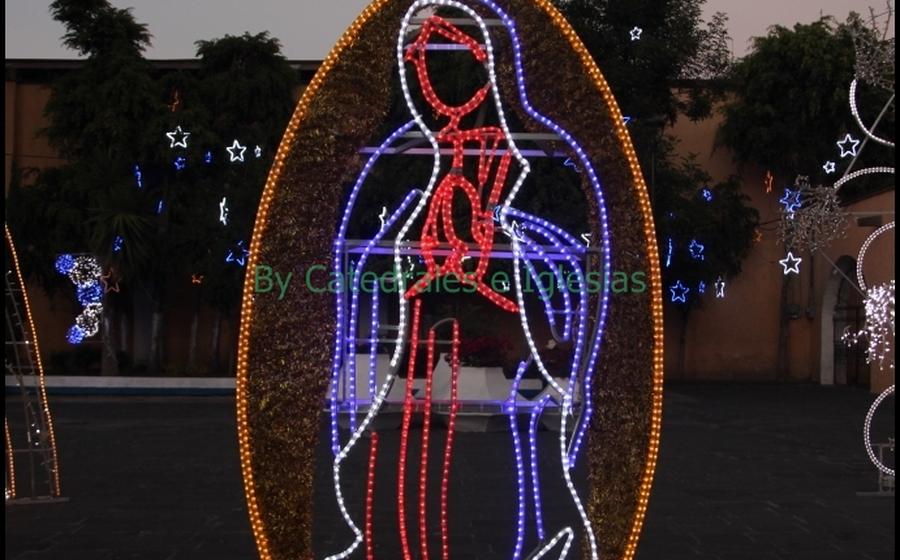
Francisco Peláez Ethnobotanical Garden
- Explore the Diverse Plant Collections
- Admire the Beautiful Landscaping
- Discover the Ethnobotanical Importance of Plants
- Take a Guided Tour
- Shop for Plants and Souvenirs
- Attend Workshops and Events
- Enjoy a Picnic or a Meal
- Take a Hike in the Surrounding Area
- Nearby Attractions
- Plan Your Visit
- Be Prepared for the Weather
- Respect the Environment
- Insider Tip: Hidden Gems
Explore the Diverse Plant Collections
The Francisco Peláez Ethnobotanical Garden boasts a remarkable collection of plants from various regions of Mexico, showcasing the country's rich biodiversity. Wander through the meticulously landscaped gardens and discover an array of native species, including towering cacti, lush ferns, vibrant wildflowers, and majestic trees. Admire the beauty of rare and endangered species, such as the Cycad, a living fossil that has survived for millions of years. Learn about the cultural significance of plants to the indigenous peoples of Mexico, who have utilized them for food, medicine, and spiritual purposes for centuries. Each plant tells a story of human interaction with nature, highlighting the deep connection between the indigenous communities and their environment.
Admire the Beautiful Landscaping
The Francisco Peláez Ethnobotanical Garden stands out not only for its diverse plant collection but also for its stunning landscaping. The garden is meticulously designed with carefully laid out paths that wind through various sections, each showcasing a unique plant community. Visitors can stroll along these paths and admire the vibrant colors and textures of the plants, as well as appreciate the intricate arrangement of the gardens.
The garden's landscaping also takes advantage of the natural beauty of the surrounding mountains. From many points within the garden, visitors can enjoy breathtaking views of the Sierra Madre Oriental range. These vistas add a sense of grandeur to the garden and create a peaceful and serene atmosphere. Whether you're a nature lover, a photographer, or simply someone looking for a tranquil escape, the beautifully landscaped Francisco Peláez Ethnobotanical Garden offers a feast for the eyes and a sanctuary for the soul.
Discover the Ethnobotanical Importance of Plants
The Francisco Peláez Ethnobotanical Garden is not just a place to admire beautiful plants; it is also a place to learn about the deep and intricate relationship between humans and plants. The garden's ethnobotanical focus highlights the cultural significance of plants to the indigenous peoples of Mexico.
Visitors can explore interactive exhibits and participate in educational programs that delve into the traditional uses of plants for food, medicine, and other purposes. These exhibits and programs provide a fascinating glimpse into the rich cultural heritage of Mexico and the important role that plants have played in shaping the lives of its people.
By learning about the ethnobotanical importance of plants, visitors gain a deeper understanding of the interconnectedness of all living things. They come to appreciate the vital role that plants play in human health, culture, and survival.
Take a Guided Tour
To enhance your experience at the Francisco Peláez Ethnobotanical Garden, consider taking a guided tour. Led by knowledgeable and experienced guides, these tours provide in-depth information about the plants and their uses. Learn about the cultural significance of plants to the indigenous peoples of Mexico, their traditional uses for food, medicine, and other purposes, and the importance of preserving plant biodiversity. Tours are available in both English and Spanish, ensuring that visitors from all over the world can benefit from this immersive experience. Whether you are a plant enthusiast, a history buff, or simply someone who appreciates the beauty of nature, a guided tour of the Francisco Peláez Ethnobotanical Garden is a must-do activity.
Shop for Plants and Souvenirs
The Francisco Peláez Ethnobotanical Garden offers a unique opportunity to purchase plants, seeds, and gardening supplies that are not easily found elsewhere. The garden's nursery features a wide selection of native Mexican plants, including many that are rare and endangered. Visitors can also find a variety of exotic plants from around the world, as well as gardening supplies such as pots, soil, and fertilizers.
In addition to plants, the garden also sells a variety of souvenirs and handicrafts made by local artisans. These items are a great way to support the garden's conservation efforts and bring a piece of Puebla home with you. Visitors can find everything from traditional Mexican pottery and textiles to unique jewelry and artwork.
By shopping at the Francisco Peláez Ethnobotanical Garden, visitors can not only take home a beautiful plant or souvenir, but also support the garden's mission to conserve and promote the traditional uses of plants.
Attend Workshops and Events
The Francisco Peláez Ethnobotanical Garden offers a variety of workshops and events throughout the year, providing an excellent opportunity to learn more about gardening, ethnobotany, and sustainability. These workshops are led by experts in their respective fields and cover a wide range of topics, such as plant propagation, herbal medicine, and sustainable gardening practices.
In addition to workshops, the garden also hosts special events, such as plant fairs and festivals. These events are a great way to learn about new plants, meet other plant enthusiasts, and support the garden's conservation efforts. Visitors can browse through a variety of plant vendors, attend educational talks and demonstrations, and enjoy live music and entertainment.
Whether you are a seasoned gardener or simply someone who enjoys learning about plants, the Francisco Peláez Ethnobotanical Garden's workshops and events are a great way to deepen your knowledge and appreciation of the plant world.
Enjoy a Picnic or a Meal
After exploring the fascinating world of plants, take a break to savor the flavors of Puebla in the garden's serene setting. Designated picnic areas, nestled amidst lush greenery, invite you to spread out a blanket and enjoy a leisurely picnic with friends or family. Pack a basket filled with local delicacies, such as fresh fruit, artisanal cheeses, and traditional Mexican snacks, and let the beauty of the garden enhance your dining experience.
For those who prefer a more substantial meal, the garden's on-site restaurant offers a tempting array of traditional Mexican dishes, prepared with fresh, seasonal ingredients. Savor the rich flavors of Puebla's cuisine as you take in the stunning views of the surrounding mountains. Whether you choose to picnic under the shade of trees or indulge in a delightful meal at the restaurant, the Francisco Peláez Ethnobotanical Garden provides a unique and unforgettable dining experience.
Take a Hike in the Surrounding Area
The Francisco Peláez Ethnobotanical Garden is surrounded by beautiful natural scenery, making it an ideal starting point for a hike. A network of trails winds through the nearby hills and forests, offering visitors the chance to explore the region's rich biodiversity. Along the way, you might encounter hidden waterfalls, caves, and viewpoints that provide stunning vistas of the surrounding landscape.
Whether you're a seasoned hiker or simply looking for a leisurely stroll, there's a trail to suit your needs. Some trails are short and easy, while others are more challenging and require a higher level of fitness. Be sure to bring sturdy shoes, plenty of water, and a hat to protect yourself from the sun.
As you hike, keep an eye out for the diverse flora and fauna that call this region home. You might spot colorful birds, butterflies, and reptiles, as well as a variety of plants and flowers. With a little luck, you might even catch a glimpse of a wild animal, such as a deer or a coyote.
Hiking in the area surrounding the Francisco Peláez Ethnobotanical Garden is a great way to connect with nature and appreciate the beauty of the Mexican countryside. Whether you're looking for a challenging trek or a relaxing walk, you're sure to find something to enjoy.
Nearby Attractions
Beyond the Francisco Peláez Ethnobotanical Garden, the city of Puebla and its surroundings offer a wealth of attractions for visitors to explore. The historic center of Puebla is a UNESCO World Heritage Site, renowned for its colonial architecture, including the magnificent Puebla Cathedral and the intricate Talavera tiles that adorn many buildings. Cholula, just a short drive from Puebla, is home to the largest pyramid in the world, the Great Pyramid of Cholula, which offers stunning views from its summit. For a unique wildlife experience, visit Africam Safari, a sprawling wildlife park with over 5,000 animals from all over the world, including lions, giraffes, and elephants.
Plan Your Visit
To make the most of your visit to the Francisco Peláez Ethnobotanical Garden, careful planning is essential. Consider the time of year you plan to visit, as the garden's beauty and offerings vary with the seasons. Spring and early summer are ideal for catching the vibrant displays of flowers in bloom, while autumn offers a unique charm with the changing colors of the foliage.
Allow yourself ample time to explore the garden's diverse collections, exhibits, and landscapes. Set aside at least two to three hours to fully appreciate its wonders. If you're particularly interested in learning more about the ethnobotanical significance of plants, consider booking a guided tour or attending a workshop.
To immerse yourself in the local culture and history, consider spending a night or two in Puebla, a city renowned for its colonial architecture, vibrant culinary scene, and rich cultural heritage. This will allow you to explore the city's attractions, such as the Puebla Cathedral and the Amparo Museum, at a leisurely pace.
Be Prepared for the Weather
Puebla's climate is generally mild, with warm days and cool nights. However, temperatures can vary depending on the season. During the summer months (June to September), temperatures can reach the mid-80s Fahrenheit (30 degrees Celsius), while in the winter months (December to February), temperatures can drop to the mid-40s Fahrenheit (7 degrees Celsius).
It's essential to dress in layers when visiting the garden to adjust to the changing temperatures. A light jacket or sweater is recommended for the morning and evening, while shorts or light pants are suitable for the daytime. Don't forget to bring sunscreen, a hat, and comfortable shoes, as you'll be doing a lot of walking.
Puebla's rainy season typically runs from May to October. While the rain is usually brief and sporadic, it's always a good idea to be prepared for the possibility of showers. Bring a light raincoat or umbrella just in case.
Respect the Environment
As you explore the Francisco Peláez Ethnobotanical Garden, it is important to remember that you are a guest in this special place. Please respect the environment and follow the garden's rules and regulations. Stay on designated trails to avoid disturbing the plants and wildlife. Dispose of trash properly in the designated bins to help keep the garden clean and sustainable. By doing so, you can help preserve the beauty and tranquility of this unique destination for generations to come.
Insider Tip: Hidden Gems
Beyond the main attractions, the Francisco Peláez Ethnobotanical Garden holds a few hidden gems for those who take the time to explore. The butterfly garden is a haven for these delicate creatures, fluttering their colorful wings amidst the lush vegetation. Seek out the secret garden, a secluded oasis tucked away from the main paths, where rare and unusual plants thrive in a tranquil setting. As you wander through the garden, take moments to pause and appreciate the peace and tranquility that envelops this special place. Let the beauty of nature soothe your soul and rejuvenate your spirit.

